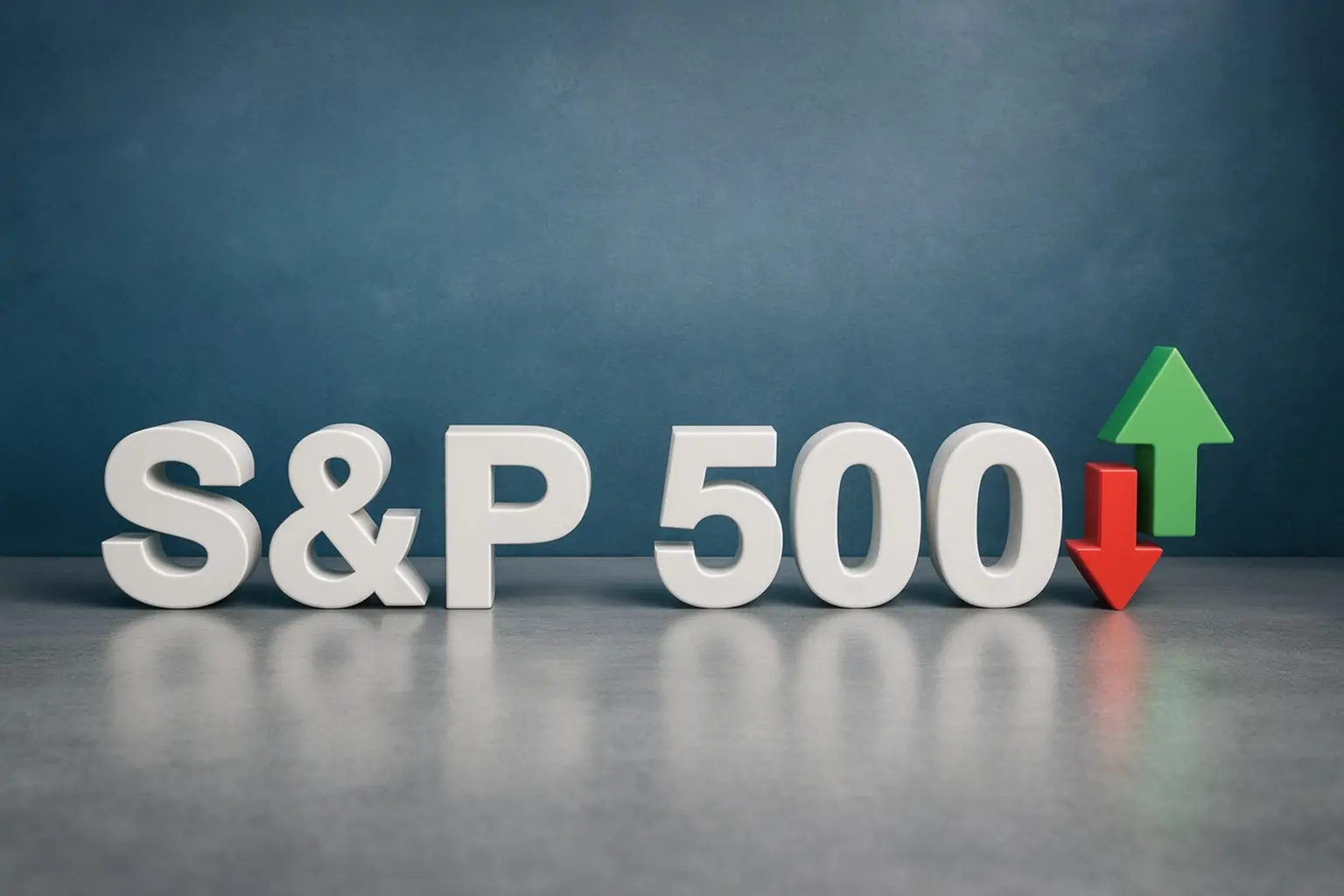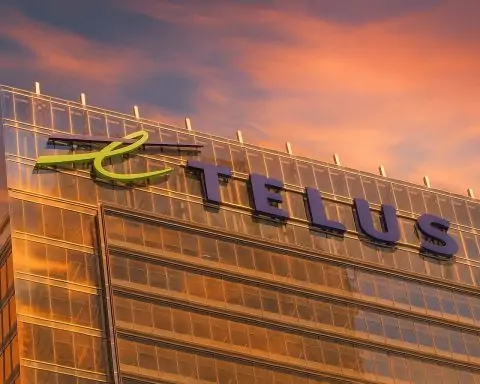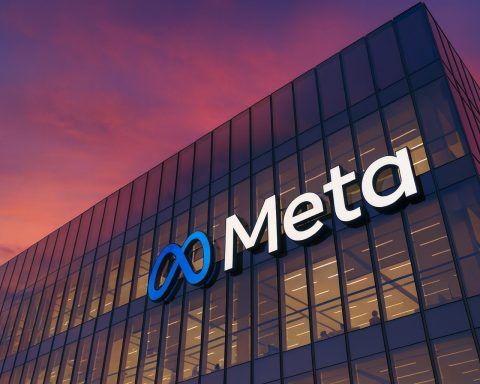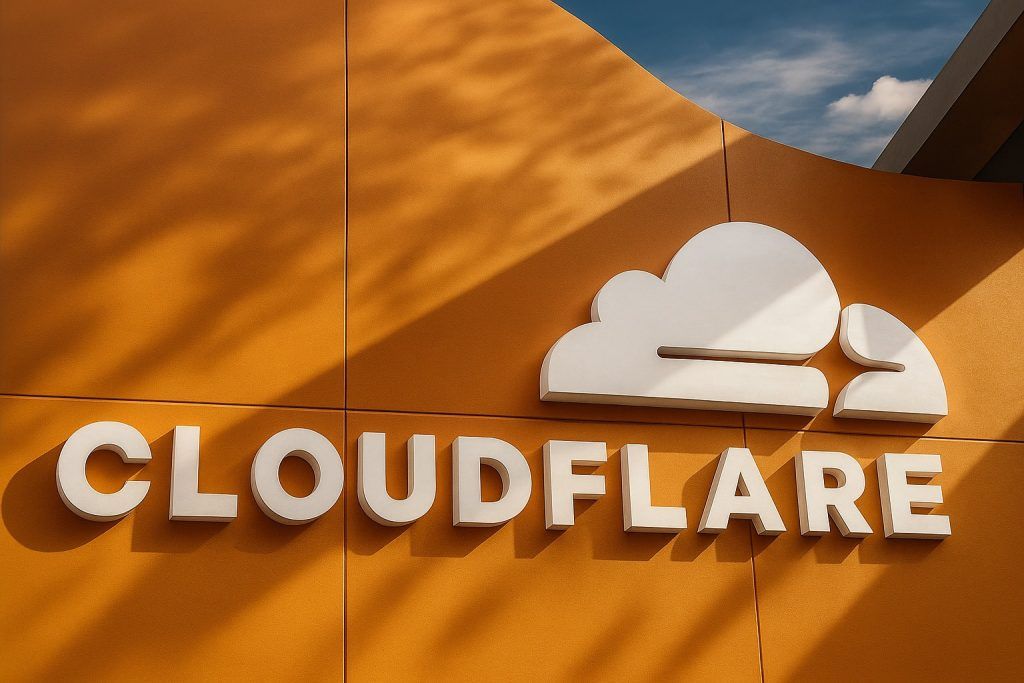U.S. stocks spent Tuesday under pressure again as worries about an overheated artificial‑intelligence trade, a disappointing update from Home Depot, and a drumbeat of mixed economic signals kept investors firmly in “risk‑off” mode.
By late morning in New York, the Dow Jones Industrial Average was down close to 1%, while the S&P 500 slipped around 0.5% and the Nasdaq 100 nearly 0.9%, with all three benchmarks hovering near one‑month lows and extending Monday’s roughly 1% drop. [1]
At the center of the selling: renewed AI bubble fears ahead of Nvidia’s blockbuster earnings on Wednesday, and fresh signs that U.S. consumers are getting more cautious as Home Depot trimmed its outlook.
Key takeaways (18 November 2025)
- Indexes slide again: Dow, S&P 500, and Nasdaq 100 extend Monday’s losses and trade around one‑month lows as tech weakness drags the market. [2]
- AI trade under scrutiny: Nvidia and Palantir fall again as Alphabet CEO Sundar Pichai warns AI valuations may have become “irrational,” stoking fears of a broader tech sell‑off. [3]
- Home Depot disappoints: The Dow component misses profit estimates and cuts full‑year guidance, sending its stock down more than 3–4% and raising questions about big‑ticket consumer spending. [4]
- Rates ease, but nerves stay high: The 10‑year U.S. Treasury yield slips to just above 4.0% as soft labor indicators emerge, yet equity markets remain on edge. [5]
- Bitcoin and commodities soften: Bitcoin hovers around $91,000 after briefly breaking below $90,000 overnight, while gold and oil tick lower. [6]
- Huge week ahead: Nvidia’s earnings, a wave of major retail results, and a backlog of U.S. economic data after the recent government shutdown are all queued up to test sentiment. [7]
Wall Street extends Monday’s sell‑off
After a rough start to the week, futures were already pointing lower early Tuesday, with contracts tied to the Dow off about 0.7%, S&P 500 futures down roughly 0.5%, and Nasdaq futures lower by about 0.6%. [8]
Those pre‑market losses translated into another broad decline at the open:
- Dow Jones Industrial Average: down close to 0.9%
- S&P 500: off about 0.3–0.5%
- Nasdaq Composite / Nasdaq 100: lower by roughly 0.4–0.9% [9]
Tuesday’s action follows a rough Monday session in which all three major benchmarks lost around 1% amid renewed anxiety that AI‑linked mega‑caps have simply run too far, too fast. [10]
The weakness is concentrated in technology and AI leaders, but the selling is broad enough that cyclical names tied to housing and the consumer—like Home Depot—are also under pressure.
AI bubble fears put Nvidia and Palantir in the spotlight
The central story this week is simple: Nvidia’s earnings on Wednesday have become a referendum on the entire AI trade.
Nvidia: world’s most valuable company under pressure
Nvidia, now the world’s most valuable publicly traded company, has been the single biggest driver of the S&P 500’s gains this year, accounting for several percentage points of the index’s return thanks to its dominant position in AI data‑center chips. [11]
But investors are suddenly less sure that even stellar numbers will be enough:
- Nvidia shares fell nearly 2% on Monday and are down another ~1–1.5% today, as traders brace for Wednesday’s report. [12]
- Options pricing implies roughly a 7% swing in either direction by the end of the week, underlining how pivotal this release has become. [13]
Recent quarters have largely turned into “sell‑the‑news” events: Nvidia has delivered record‑breaking results repeatedly, but its stock has still tended to finish the week lower after earnings as sky‑high expectations proved hard to top. [14]
Palantir as a cautionary tale
If Nvidia is the poster child for AI optimism, Palantir is the new example of what happens when that optimism collides with reality.
Ahead of its early‑November earnings, traders were pricing in a 10% post‑report move either way, with Palantir up about 165% year‑to‑date and among the best performers in the S&P 500. [15]
Palantir then delivered strong numbers and upbeat guidance—but the stock still tanked:
- The day after its earnings, Palantir shares fell roughly 8%, as profit‑taking and valuation concerns took over. [16]
- Since that drop, the stock has continued to drift lower, even as AI hype headlines remained loud. [17]
For traders watching Nvidia, Palantir’s pattern is a warning: in the current environment, even “beats” can be punished if investors see any hint that growth is normalizing or valuations have outpaced fundamentals.
Alphabet CEO’s AI warning adds fuel
That nervousness got an additional shove Tuesday from Alphabet CEO Sundar Pichai, who told the BBC that AI stock valuations show signs of “irrationality” and cautioned that no company, including Alphabet itself, is immune if investors re‑rate the sector. [18]
The reaction was paradoxical but telling:
- Alphabet (GOOGL) traded more than 1% higher, buoyed by news that Warren Buffett’s Berkshire Hathaway amassed roughly $4 billion worth of shares in the third quarter. [19]
- Nvidia and Palantir moved lower again, as investors used the commentary as another reason to trim positions in the most richly valued AI names. [20]
Meanwhile, Amazon and Microsoft were both down more than 1% after a downgrade from Rothschild & Co Redburn, adding to the tech‑led drag on the indexes. [21]
Home Depot earnings jolt the Dow and consumer outlook
If tech is the emotional driver of today’s market, Home Depot is the fundamental one.
The home‑improvement giant kicked off a big week for retailers with mixed third‑quarter results:
- Adjusted EPS came in at $3.74, missing consensus estimates around $3.81 and slipping slightly from last year. [22]
- Revenue rose around 3% year over year to roughly $41.3 billion, beating forecasts, but that wasn’t enough to offset the profit disappointment. [23]
CEO Ted Decker cited a weak housing market and a surprisingly quiet storm season—meaning fewer insurance‑driven repair and remodeling projects—as major headwinds for big‑ticket home improvement demand. [24]
More worrying for investors, Home Depot cut its full‑year guidance:
- The company now expects sales growth of about 3% with only “slightly positive” same‑store sales, but net profit down around 6% for the year. [25]
The stock reaction was swift:
- Home Depot shares fell more than 3–4% in early trade, making it one of the biggest drags on the Dow. [26]
The report immediately sharpened focus on other big retailers reporting this week, including Lowe’s, Target, TJX, Ross Stores, BJ’s Wholesale, Gap, and Walmart. [27]
If more companies echo Home Depot’s cautious tone, the market could interpret it as a sign that higher borrowing costs and a cooling housing market are finally biting the consumer, a key pillar of U.S. growth.
Big Tech: Alphabet rallies, Apple steadies, others stumble
Outside of Nvidia and Palantir, Tuesday brought a split tape across mega‑cap tech:
- Alphabet (Google) continued its ascent after Berkshire Hathaway revealed a new multibillion‑dollar stake, helping push the stock to fresh records. [28]
- Apple ticked slightly higher after data showed its new iPhone 17 line boosted China sales by about 37% in October, giving the company roughly a quarter of the Chinese smartphone market for the first time since 2022. [29]
- On the downside, Oracle shares were lower, and PC/server names like Dell, Hewlett Packard Enterprise, and HP extended Monday’s steep declines following a bearish analyst call tied to surging memory‑chip prices. [30]
Elsewhere in tech, Cloudflare dropped around 4% after an outage temporarily disrupted several high‑profile clients, including X (formerly Twitter) and ChatGPT, adding another idiosyncratic headwind to an already fragile tape. [31]
Macro backdrop: falling yields, delayed data, global risk‑off mood
The picture in rates and macro data is more nuanced than the red on the equity screens might suggest.
Yields slip as labor data softens
As stocks fell, Treasury prices rose, pushing the 10‑year yield down to roughly 4.1%, a decline of about 4 basis points from Monday’s close. [32]
A key driver: signs of cooling in the labor market:
- ADP data showed U.S. employers shed an average of about 2,500 jobs per week over the four weeks ended November 1. [33]
- Weekly initial jobless claims hovered around 232,000, while continuing claims climbed to roughly 1.96 million, a two‑month high. [34]
Those figures reinforce the idea that the Fed can keep cutting rates, with futures markets now pricing roughly a 50% chance of another quarter‑point cut at the December 9–10 FOMC meeting. [35]
Government shutdown fallout: data backlog
Markets are also bracing for a flood of delayed economic reports after the recent government shutdown temporarily froze key releases:
- A long‑postponed September jobs report is due later this week, alongside delayed updates on factory orders, durable goods, trade, housing, and consumer sentiment. [36]
The unusual data backlog is adding an extra layer of uncertainty to an already jittery market, as investors try to re‑anchor their view of growth and inflation.
Commodities, crypto, and global markets
The broader risk backdrop is also soft:
- Bitcoin traded around $91,000–$92,000 after briefly falling below $90,000 overnight—its lowest level since late April. [37]
- Gold slipped to roughly $4,000–$4,100 per ounce, while U.S. crude oil hovered just under $60 per barrel. [38]
- In equities, European and Asian markets also traded lower, with the Euro Stoxx 50, China’s Shanghai Composite, and Japan’s Nikkei 225 all posting meaningful declines and hitting recent lows. [39]
Taken together, the moves paint a picture of a global “de‑risking” phase, where investors are trimming exposure to high‑beta assets and richly valued growth names rather than reacting to a single shock.
Policy backdrop: tariffs, inflation, and political noise
Another thread entwined with today’s market narrative is trade policy and inflation politics.
President Donald Trump has floated a series of measures aimed at easing grocery prices, including lowering certain tariffs and proposing a $2,000 “tariff dividend” rebate check for low‑ and middle‑income households. [40]
Key points:
- Economists note that cutting tariffs may only gradually filter through to lower food prices, especially given complex supply chains. [41]
- The proposed $2,000 tariff rebate checks face political hurdles in Congress and are unlikely to arrive before 2026, limiting any near‑term impact on consumer spending. [42]
For markets, these moves matter mostly at the margin—they affect expectations for inflation, disposable income, and future Fed policy—but on a day dominated by AI and earnings, they remain a supporting storyline rather than the main event.
What to watch for the rest of the week
With Tuesday’s trading shaped by position‑trimming and headline anxiety, the real tests for markets still lie ahead.
1. Nvidia earnings (Wednesday after the close)
All eyes will be on Nvidia’s report and guidance:
- Analysts expect revenue and earnings to jump more than 50% year‑on‑year, reflecting relentless demand for AI chips. [43]
- The bigger question is what CEO Jensen Huang says about 2026 and beyond—especially around supply constraints, customer spending plans, and competitive pressures. [44]
A strong beat and confident outlook could spark a relief rally in AI names and broader tech. Anything short of that might accelerate the current de‑rating.
2. Retail earnings wave
Following Home Depot’s cautious tone, investors will scrutinize results from:
- Lowe’s, Target, TJX, Ross, BJ’s, Gap, Walmart, among others. [45]
These reports will offer fresh insight into:
- Big‑ticket vs. everyday spending
- How much pressure households feel from higher rates and still‑elevated prices
- The health of holiday‑season demand
3. Delayed U.S. economic data
Expect volatility around:
- The September jobs report
- Delayed figures on industrial production, factory orders, trade, housing, and PMIs [46]
Given how much of 2025’s rally has rested on the idea of a “soft landing”—slower inflation without a deep recession—any surprises here could shift both Fed expectations and equity valuations quickly.
What it all means for investors (not financial advice)
For traders and longer‑term investors alike, 18 November 2025 looks like a classic “crossroads” session:
- The AI boom, led by Nvidia and Palantir, is confronting its first meaningful crisis of confidence, with major voices—including Alphabet’s own CEO—openly questioning valuations. [47]
- Cyclical bellwethers like Home Depot are signaling that parts of the real economy—housing and large home projects—are feeling the pinch. [48]
- At the same time, falling bond yields and a heavy schedule of delayed data keep the door open for further rate cuts, which could eventually support risk assets once the valuation reset runs its course. [49]
In practical terms, today underscores a few themes:
- Volatility around AI names is likely to stay elevated through Nvidia’s earnings and beyond.
- Markets are becoming more discriminating within tech, rewarding firms with clearer cash‑flow visibility and punishing those seen as purely “story” stocks.
- Consumer and housing‑linked stocks may see bigger moves as more retailers report and as investors test how resilient the U.S. shopper really is.
As always, anyone considering investment decisions should look at their own risk tolerance, time horizon, and diversification, and treat today’s moves as one chapter in a longer‑term market narrative, not the final word.
References
1. www.barchart.com, 2. www.barchart.com, 3. 247wallst.com, 4. www.investopedia.com, 5. www.barchart.com, 6. www.investopedia.com, 7. www.barchart.com, 8. www.investopedia.com, 9. www.investopedia.com, 10. www.investopedia.com, 11. www.etf.com, 12. www.investopedia.com, 13. www.investopedia.com, 14. www.investopedia.com, 15. www.investopedia.com, 16. www.fool.com, 17. finance.yahoo.com, 18. 247wallst.com, 19. www.investopedia.com, 20. 247wallst.com, 21. www.barchart.com, 22. www.investopedia.com, 23. www.investopedia.com, 24. www.investopedia.com, 25. 247wallst.com, 26. www.investopedia.com, 27. www.investopedia.com, 28. www.investopedia.com, 29. www.investopedia.com, 30. www.investopedia.com, 31. www.investopedia.com, 32. www.barchart.com, 33. www.barchart.com, 34. www.barchart.com, 35. www.barchart.com, 36. www.investopedia.com, 37. www.investopedia.com, 38. www.investopedia.com, 39. www.barchart.com, 40. finance.yahoo.com, 41. finance.yahoo.com, 42. www.investopedia.com, 43. www.forbes.com, 44. www.investopedia.com, 45. www.investopedia.com, 46. www.barchart.com, 47. 247wallst.com, 48. www.investopedia.com, 49. www.barchart.com







